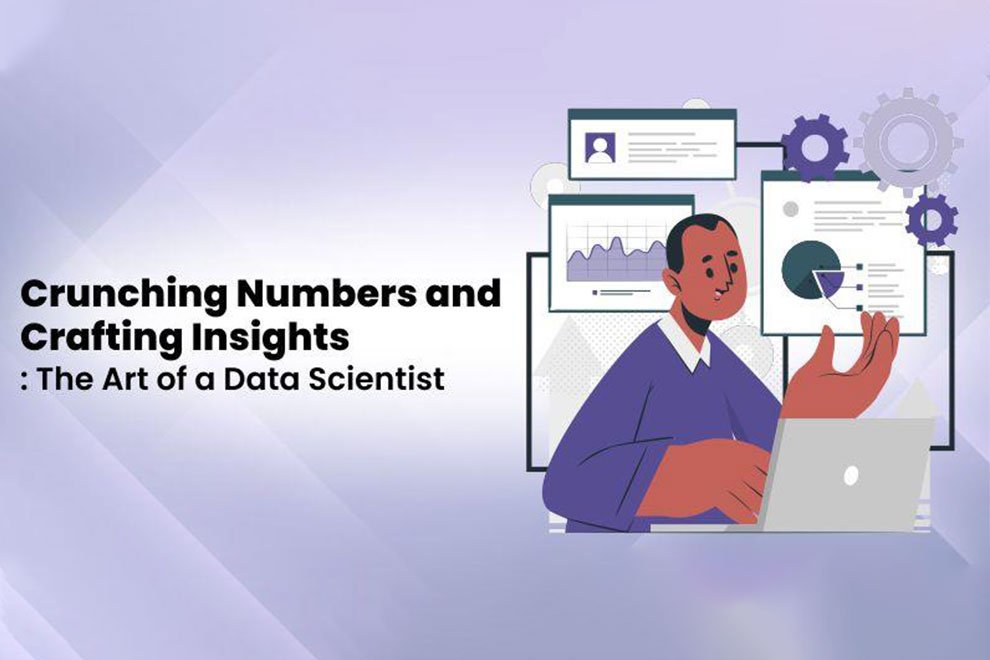In the age of information, data has become the new currency, and those who possess the skills to extract meaningful insights from it are the modern-day alchemists. Enter the realm of data science, where professionals adeptly navigate through vast datasets, crunching numbers and crafting insights that drive decision-making in every industry. Whether you’re a seasoned data scientist or someone considering a career change with aspirations for Data Scientist Training, in this blog, we’ll delve into the fascinating world of data science and explore the artistry that goes into being a successful data scientist.
The Palette of Data
In the analogy “The Palette of Data,” the concept likens data to a palette of colors, where each data point represents a unique hue. This palette is seen as a collection of raw information, much like an artist’s palette containing various colors waiting to be used in a painting.
In this analogy, data scientists are portrayed as artists who skillfully manipulate this palette to create a masterpiece. They utilize tools such as Python, R, and SQL as their paintbrushes and canvases, enabling them to cleanse, transform, and prepare the data for analysis.
Similar to artists preparing their canvas before starting a painting, data scientists emphasize the importance of data quality. This involves ensuring that the data is accurate, reliable, and free of errors. The canvas, in this context, represents the foundation on which the data scientists will apply their creative techniques.
Just as artists carefully choose and mix colors to bring their vision to life, data scientists make strategic decisions on how to combine and analyze data points to extract meaningful insights. The analogy underscores the artistic and creative aspects of working with data, highlighting the need for both technical skills and a keen understanding of the data’s nuances to produce valuable and impactful results.
The Brushstrokes of Algorithms
The metaphor “The Brushstrokes of Algorithms” draws a parallel between a painter’s brushstrokes and the choices data scientists make when selecting and applying algorithms. It emphasizes the nuanced and creative nature of working with algorithms in the field of data science.
1. Algorithmic Selection as Brushstrokes
Just as a painter selects specific brushstrokes to convey texture, depth, or emotion in a painting, data scientists choose algorithms to uncover patterns, trends, and correlations within a dataset. Each algorithm represents a tool in the data scientist’s toolkit, much like a brush in an artist’s collection.
2. Revealing Patterns and Trends
Algorithms are how data scientists reveal insights from data. Whether employing classical statistical methods or cutting-edge machine learning algorithms, the goal is to extract meaningful information. Each algorithmic “brushstroke” is a deliberate choice made to highlight particular aspects of the data, just as a painter selects a brushstroke to enhance a specific feature of a painting.
3. Artistry in Algorithm Selection
The artistry in data science lies not only in understanding the algorithms available but also in the careful selection of the right tool for a particular analytical task. It involves considering the characteristics of the dataset, the nature of the problem, and the desired outcome. This decision-making process is akin to an artist choosing the appropriate brush and technique based on the artistic vision.
4. Fine-Tuning for Relevance
Similar to a painter fine-tuning brushstrokes to achieve the desired visual effect, data scientists fine-tune algorithms to extract the most relevant information from the data. This involves adjusting parameters, optimizing models, and ensuring that the chosen algorithms align with the specific goals of the analysis.
5. Expertise in Algorithmic Craft
A data scientist’s expertise goes beyond just knowing about algorithms; it extends to understanding how to effectively use and adapt them. This mastery involves recognizing the strengths and limitations of different algorithms and adapting them to the unique characteristics of the data at hand. It’s a combination of technical proficiency and a nuanced understanding of the data’s complexities.
The Canvas of Visualization
Data visualization is the canvas on which data scientists paint their insights for others to comprehend. Tools like Tableau, Matplotlib, and D3.js serve as their brushes, allowing them to transform complex datasets into intuitive visual representations. The ability to tell a compelling story through charts, graphs, and dashboards is a crucial aspect of the data scientist’s artistry, making the insights accessible to a broader audience.
The Symphony of Domain Knowledge
Beyond the technical skills, a data scientist is a domain expert who understands the context in which the data exists. Just as a musician combines technical proficiency with an understanding of musical theory, a data scientist blends their analytical skills with domain knowledge to uncover actionable insights. This interdisciplinary approach is the harmonious symphony that distinguishes a great data scientist from a proficient one.
The Iterative Process
The iterative process in data science is akin to an artist revisiting their canvas multiple times, refining details, adjusting colors, and honing the overall composition until the final masterpiece is achieved. In the realm of data science, this iterative approach is fundamental, reflecting a dynamic and evolving journey rather than a linear progression.
1. Exploration and Discovery: The iterative process begins with exploration. Data scientists embark on an initial analysis to gain insights into the dataset’s characteristics, identifying potential patterns or trends. This phase is comparable to an artist sketching the initial outlines of a painting, setting the foundation for the work ahead.
2. Refinement of Hypotheses: As data scientists delve deeper, they form hypotheses and initial models to explain the observed patterns. However, these hypotheses are rarely perfect from the start. The iterative nature of data science allows for the constant refinement of these initial ideas as more data is collected and analyzed.
3. Model Building and Evaluation: Data scientists build models to test their hypotheses and make predictions. However, the first model is seldom the final one. Through iterative cycles, models are refined, parameters are adjusted, and different algorithms may be tested to improve predictive accuracy. This parallels an artist experimenting with various techniques and materials to enhance the visual impact of their artwork.
4. Feedback Loop with Stakeholders: The iterative process in data science involves a continuous feedback loop with stakeholders. As insights and models are developed, they are shared and discussed with domain experts, decision-makers, and other stakeholders. This collaboration ensures that the analysis aligns with business goals and incorporates valuable domain-specific knowledge.
5. Embracing Uncertainty: Unlike a deterministic process, data science often deals with uncertainty. The iterative nature allows data scientists to embrace and explore this uncertainty, acknowledging that initial assumptions may need to be adjusted based on new information or unexpected patterns in the data.
Conclusion
In the ever-evolving landscape of data, the art of a data scientist lies in the ability to navigate through the complexities, turning raw information into actionable insights. From data wrangling to algorithmic selection, visualization, and domain expertise, data scientists are the creative minds shaping the future with every analysis. As we continue to rely on data to guide decisions, the artistry of data science will only become more critical, showcasing the true craftsmanship of those who crunch numbers and craft insights.










